The Case for Stationary Draperies
http://decor-ideas.org 03/26/2014 01:22 Decor Ideas
The world of window treatments comes with its own rules, perspectives and even its own language — all of which can be confusing and strangely idiosyncratic. And it doesn’t get easier once you decide to go with draperies, as opposed to shutters or blinds.
One of your first decisions after you choose to go with draperies will be whether you want them to be operable or stationary. Do you want them to open and close (draw), or to be decorative only (stationary)? Several issues will affect the answer: Do you need privacy? Is there stack room beside the window? Are you comfortable with less light? What is your budget?
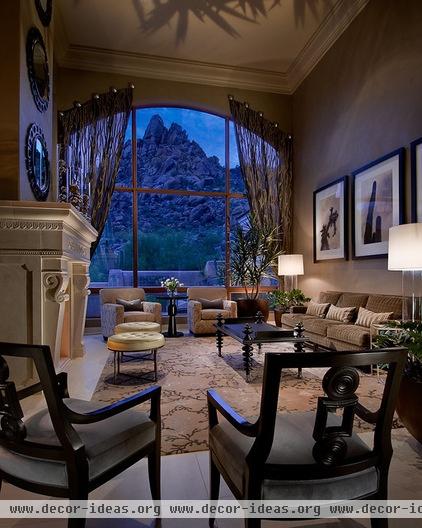
A stunning view like this one would be a compelling reason to choose stationary curtains. After all, you’ve paid mightily for that vista; it would seem silly to cover it.
In this case sheer panels offer a lovely suggestion of a window treatment without in any way detracting from the view.
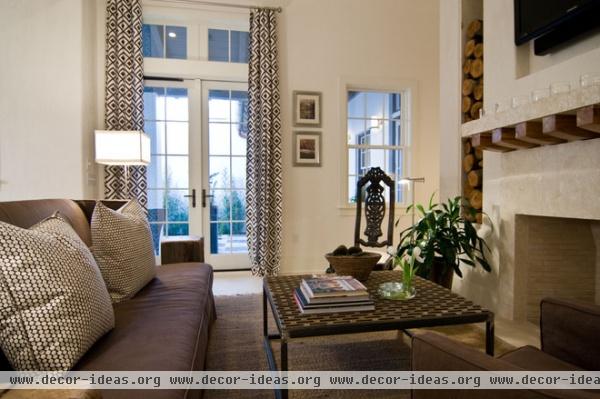
If you live on a busy street, privacy is most likely a concern. But if your house is nestled behind hedges, a tall fence or — in this instance — a protective courtyard, you may be completely comfortable with uncovered windows.
No matter where you live, your desire for privacy is a totally personal decision and will be the primary factor that informs your choice.
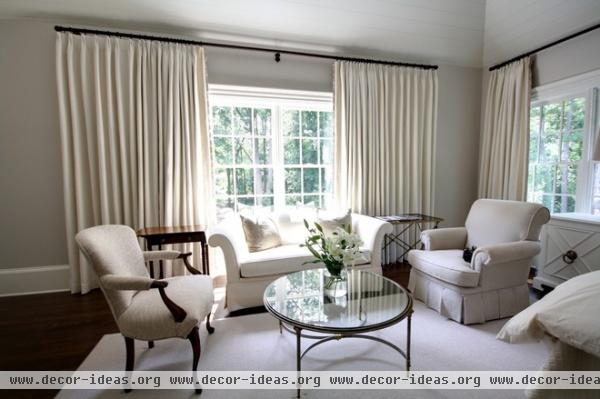
So let’s say you opt for privacy. What’s next? Stack (also called stack back ) is the amount of space required at the side of a window for the curtains to be fully open, hanging completely off the window. Stack is critical, because the more your fabric drapery covers the window, the less light will able to enter. And let’s face it, folks: Most of us like to let light in.
In this living room, there is plenty of wall space on each side of the window to allow the fabric to stack completely off the window. Thus, no light is lost. Plus, this fools the eye into thinking that the window is much larger than it actually is.
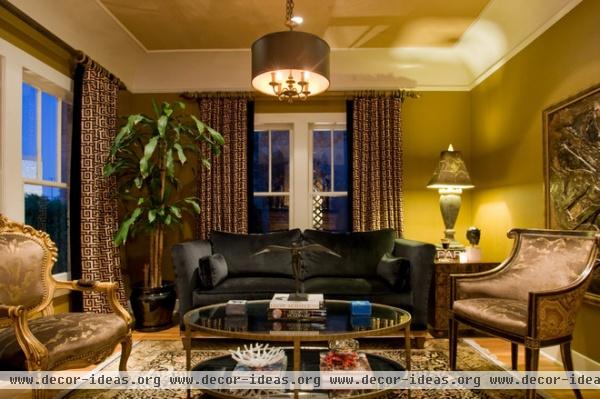
By contrast, you can see how this homeowner chose to partially cover the windows, even though there was plenty of room for stack. It’s all a question of personal taste, and there usually is no right or wrong. Proportion and a desire for more wall and less window were clearly factors in this choice.
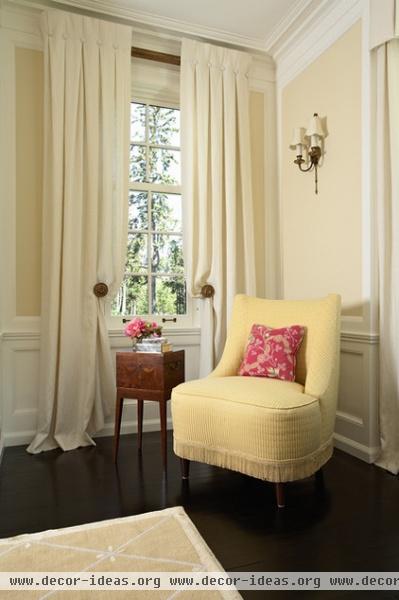
These draperies are so elegant, they make me think of Audrey Hepburn. Or Cary Grant (deep sigh). Although they are stationary, not operable, they cover most of the window. To reiterate: There are few hard and fast rules. Personal taste dictates choices.
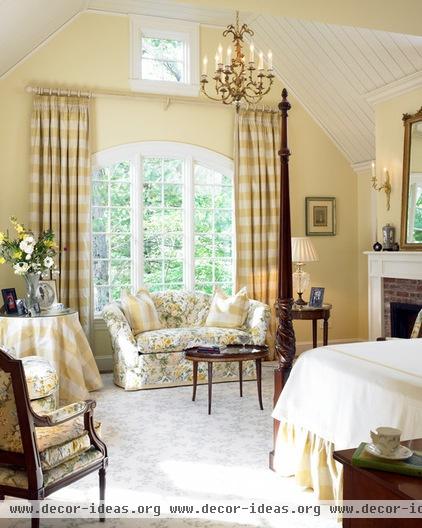
In this bedroom the angle of the vaulted ceiling leaves no room on the wall for stack. So in this application, the choice was for stationary panels. Since the window looks out on a lovely screen of lush trees and bushes, there was evidently no need for privacy.
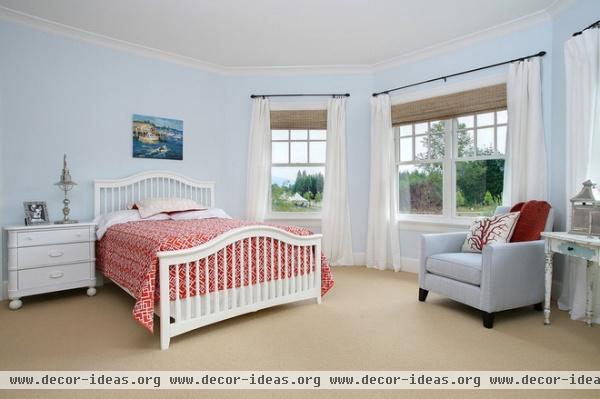
When there is no room for stack off the window, but there is a need for privacy, try using some kind of shade or blind behind the stationary panels. (We’ll talk about the bewildering array of shades, blinds and shutters in another ideabook.)
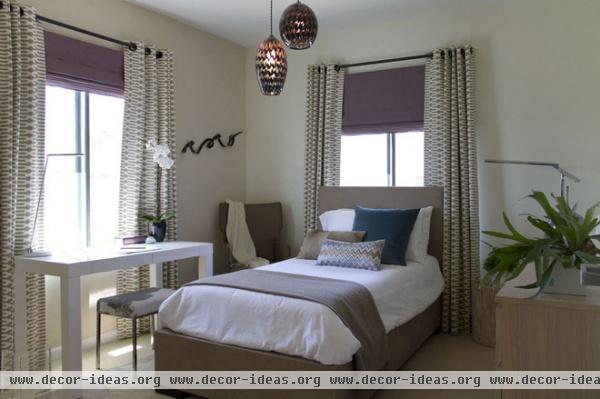
Even if there is room for stack, a blind or shade behind stationary panels is often a more budget-friendly option. Imagine the cost of having to use three times the fabric of a stationary panel — not only for the drapes, but also for the lining. Add to that the cost of longer rods or traverse rods, as well as substantially more labor, and you can see how the costs add up.
My clients are often shocked by the price of window treatments. But when you consider the miles of fabric and hours of skilled labor required, it shouldn’t be surprising that they can be one of decorating’s big-ticket items.
Honestly, unless I have a client with very deep pockets, I always opt for stationary panels with a separate privacy solution behind.
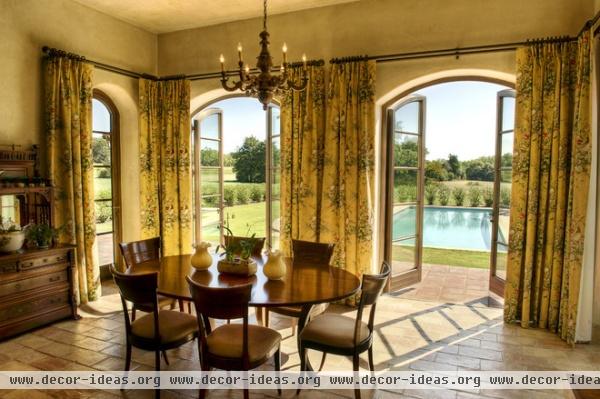
This homeowner chose operable draperies for the dining room. They open and close to permit use of the beautiful French doors. But imagine how heavy these hummers are!
Weight is the last factor in your decision process. If your chosen fabric is a medium-weight print like this, you should be OK. But if you’ve chosen a heavier woven, and have had it interlined, weight will be a real issue. Not only might you need to be Atlas to draw the drape, but it’s likely you’ll have to significantly beef up your traverse rod to handle the load.
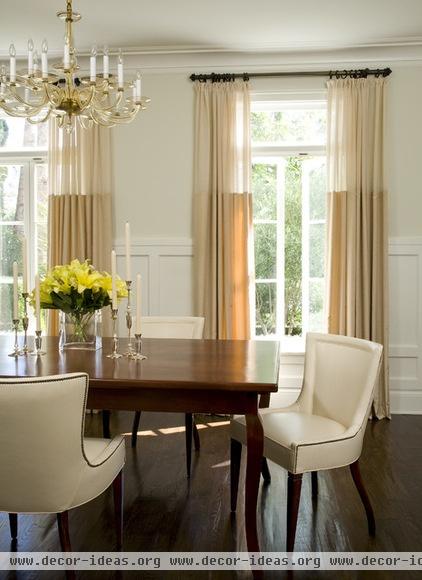
So what’s our conclusion? Window treatments can be a beautiful addition to a room. But they also present complex issues and — especially given the cost involved — you should give them careful thought before moving ahead.
Next time we’ll discuss the aspect of window treatments that is easiest to get wrong: proportion.
More: Learn the lingo of window treatments
Related Articles Recommended












